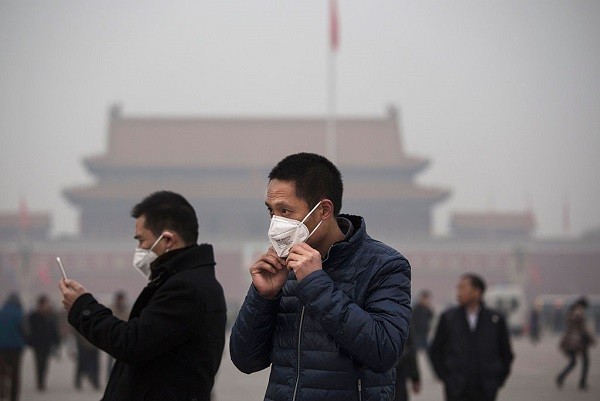Kaier New Materials, an enamel manufacturer n Zhejiang Province, claims having invented an enamel bloc that could decompose air pollutants into carbon dioxide, mineral salt and water. It includes PM2.5, which had caused Beijing to issue two red alerts in December.
The company added a highly oxidizing and hydrophilic nanometer material into the enamel. Shu Wenxiao, researcher of Kaier, explained that the new material will have a photosynthesis-like reaction with nitrogen oxides, sulfides and other organic air pollutants, reported Globaltimes.
If a home or building owner would use 200 square meters of the Kaier enamel block, its purifying effect would be equivalent to having 14 mature poplar trees. Covering a 100-meter tall building with 20,000 square meters of the enamel would purify air like there were 1,400 poplar trees, Shu said.
Kaier had their construction material confirmed by a material testing center in early January, and the test proved that the wall could decompose pollutants. But the company is still waiting for results of air-purifying function test.
Shu said Kaier is not yet ready to manufacture the enamel in commercial quantity and sell it to the market. He explained that since local testing institutions do not have benchmarks for the material the company developed, the firm in searching first for foreign organizations to test their product,
But Pan Liangjiang, an environmental protection technology developer based in Zhejiang, doubted if the enamel could be used in construction. He said the mineral salt created by the process could diminish the wall’s effectiveness over time. Pan also wanted to know if lower sunlight condition during a smoggy day would impact the enamel’s decomposition effect.
Although there is a slight decrease in air pollution levels across China, the country could still benefit from new anti-smog technologies that companies like Kaier would develop, produce and market. The newly released report of Greenpeace said that the average PM2.5 concentration national decreased by 10 percent compared to 2014 levels. Major Chinese cities such as Beijing, Shenzhen and Guangzhou registered significant reductions in their PM2.5 levels, but the 2015 average was still toxic since it is five times the recommended level by the World Health Organization, reported City Metric.



























